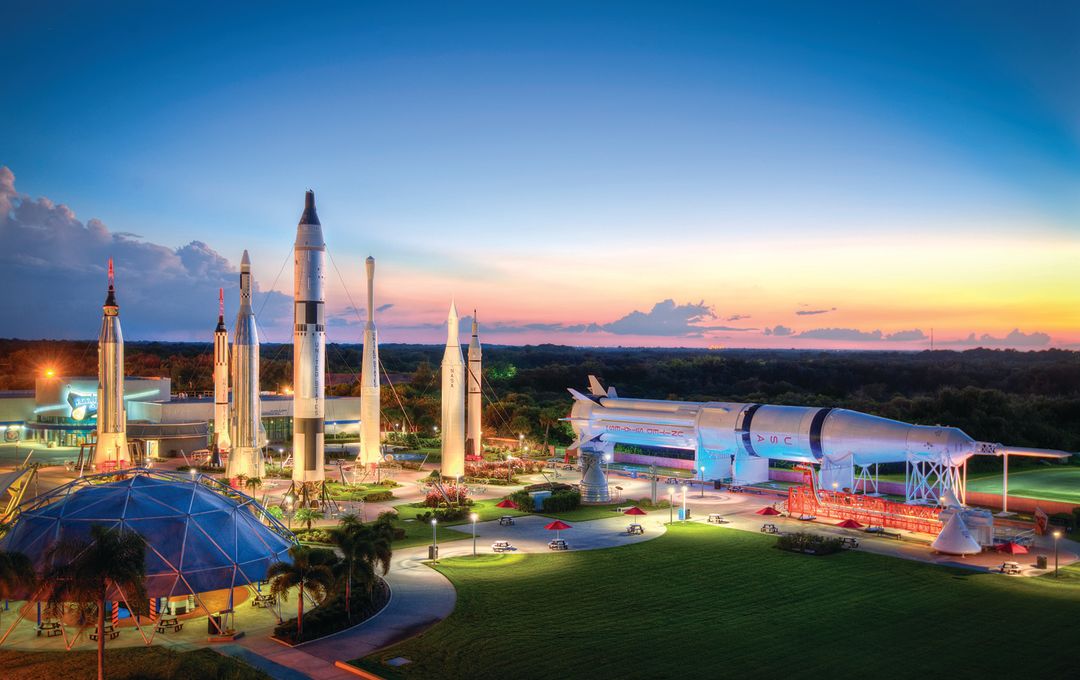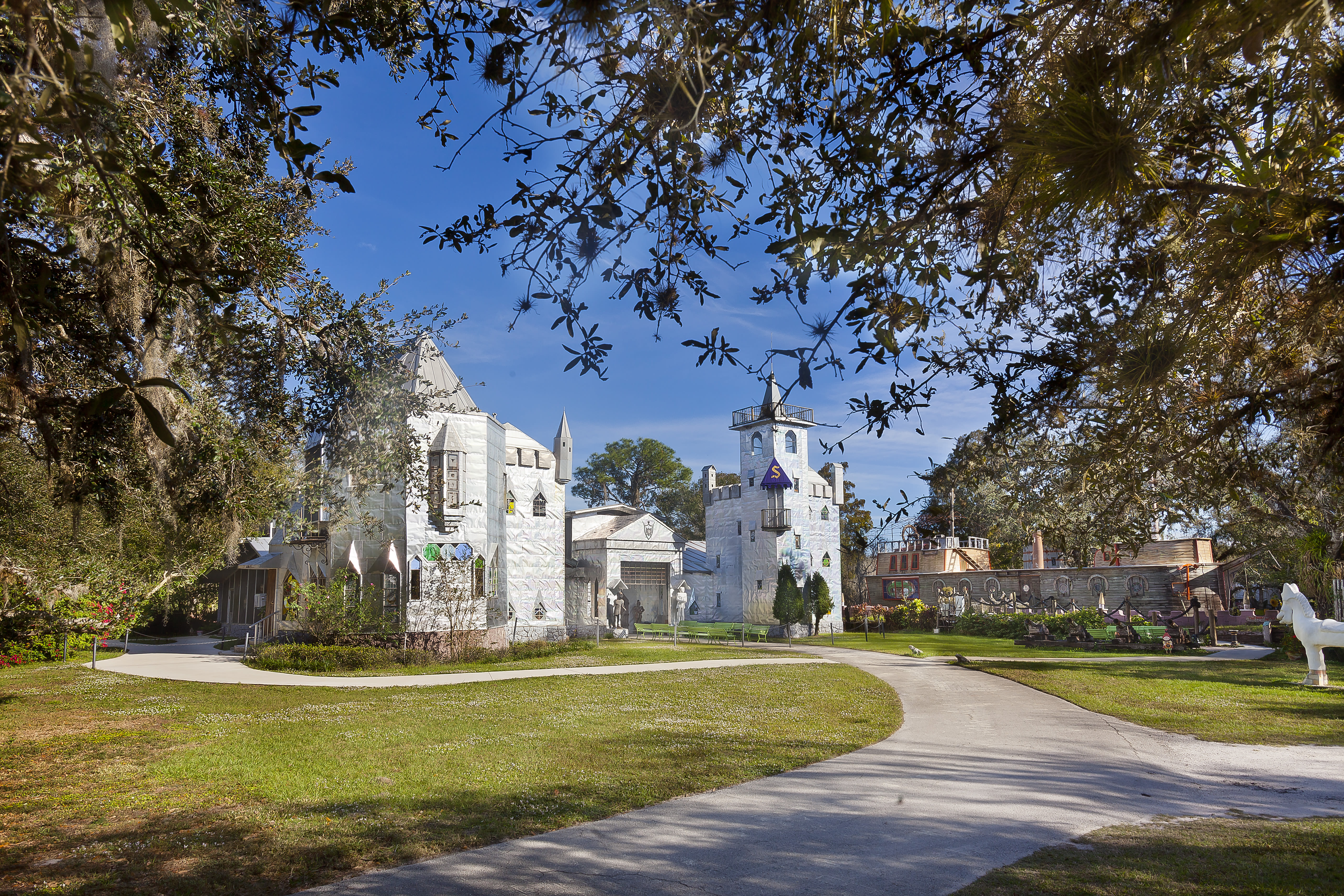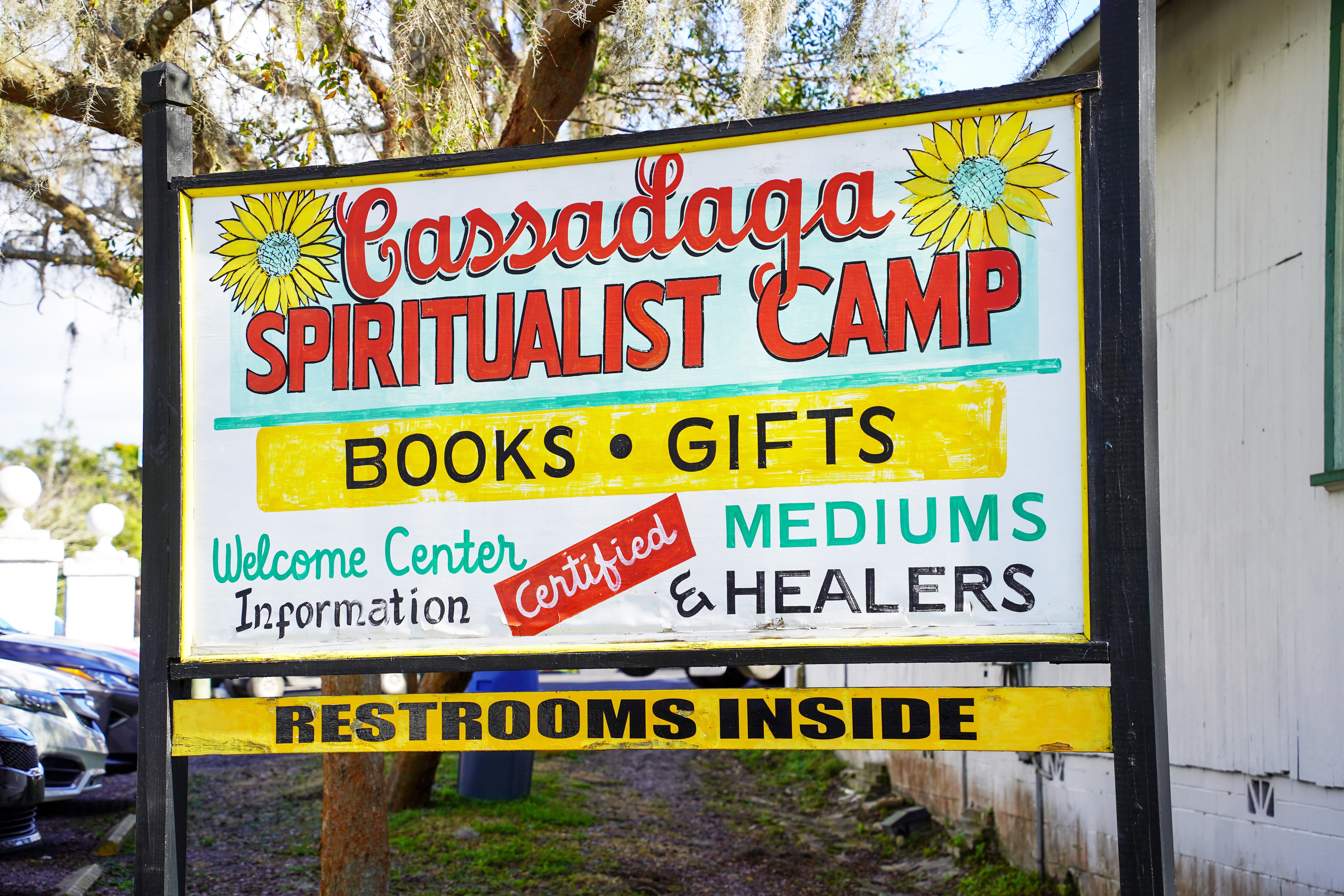Kennedy Space Center Aims to Inspire Future Astronauts

The Rocket Garden at Kennedy Space Center.
We’re going back to the moon. That was the challenge put to the National Aeronautics and Space Administration last December by President Trump, when he reshuffled details of the country’s National Space Policy. Since the retirement of the space shuttle program in 2011, NASA had primarily concentrated on the long-term goal of sending humans to Mars. Trump’s challenge keeps Mars as the ultimate goal of NASA’s efforts, but in the meantime he wants astronauts to return to the moon for “long-term exploration and utilization.”
The goal of NASA’s Kennedy Space Center complex in Titusville is to get kids psyched to one day join that mission. The center recently opened a brand-new Astronaut Training Experience attraction intended to simulate what touchdown on Mars will feel like and what it will be like to live and work on the fourth planet from the sun. “We’re all about inspiration, particularly for the kids,” says Rebecca Shireman of Delaware North, the Buffalo, New York, company that operates the space center visitor complex.
On a frigid day last December, my wife, Rachel, and I dragged our two boys, Theo, then 5, and Felix, 3, to Cape Canaveral to deliver a dose of that inspiration. The center justifies two days of exploration, with a large main campus, plus bus tours that take you out to the iconic rocket assembly building and a separate facility that houses one of the Saturn V rockets that was used during the race to moon in the late 1960s.
We wound our way through one building that offers intimate insight into the men and women who built the space program and marveled at the space shuttle Atlantis, which flew 33 missions, including the final space shuttle voyage. Atlantis hangs from the roof of an immense building, with its bay doors open and robotic arm extended. The shuttle’s black-and-white heat shields, which look like pockmarked foam plates, bear the scars of reentry—streaks scraped into the shuttle’s skin by the 3,000-Fahrenheit temperatures it encountered on the way home.
Seeing the shuttle raised complicated feelings. I’m 37. For kids of my generation, the space shuttle program was NASA. I understand the rationale for shutting it down (budget constraints prevented NASA from maintaining the shuttle program while also launching new missions), but seeing these awe-inspiring spacecraft turned into museum pieces made me melancholy.
The bus tour deepened that feeling. We ducked out of the cold and into a warm, buzzing vehicle. It was late in the afternoon, and our kids were getting drowsy. We motored out to old launchpads now being used by the company SpaceX, passing the huge crawlers that used to transport rockets from the 526-foot-tall assembly building to the launchpads at 2 miles per hour. We strolled the length of a Saturn V rocket, more than twice as tall as the Statue of Liberty, and sat in on dramatic, well-crafted re-creations of what it was like to witness the launch and land on the moon.
One poignant video shows people around the world seeing the Apollo 11 lunar module touch down on the moon’s surface—individuals from around the globe glued to television screens lit up with flickering black-and-white images of alien territory. I know this is easy nostalgia. The American space program didn’t bring people together for more than a moment, and maybe not even that long. “I can’t pay no doctor bills, but whitey’s on the moon,” rapped Gil Scott-Heron in 1970, bemoaning a country that could afford to explore space but not eradicate poverty.
Much of the excitement around space exploration today comes from private companies like SpaceX, which hopes to one day act as a ferry to the International Space Station, and Moon Express, which wants to land on the moon to extract water and minerals to resell back on earth. You can plan a trip to Kennedy to coincide with a SpaceX launch from Cape Canaveral; videos of takeoffs and landings are breathtaking.
But while we can cheer on private companies, they don’t give us the sense of collective purpose and action roused by NASA’s past glories. It’s easy to imagine a future in which billionaires go on cushy space tourism jaunts, while the rest of us tour monuments to the past, jolted by evidence of what we were once capable of accomplishing, together. The national mood these days seems exhausted, worn down. Are our best days behind us or ahead of us? I’m not sure. For the sake of my sons, whose eyelids grew heavy as we rumbled through a tangerine sunset on our way back to the main visitor complex, I hope those days are ahead of us. Mission to Mars? I’m all for it.
Insider Info
From Greg Holladay, general manager at the legendary seafood restaurant Dixie Crossroads near the Space Center
“Rodney Thompson, the original owner of Dixie Crossroads, invented a machine that splits open rock shrimp. Before him, nobody could figure out how to get into them. We’re close to the fields that the shrimp are in, and so we get the pick of the litter. Broiling them with butter is the best way to serve them.”
“We have a fishing tournament called The Hunt for Redfish in October, and we’re one of the few places you can catch big redfish. Mosquito Lagoon is a great place to go out fishing.”
“Playalinda Beach is the local beach. It’s kind of hush-hush famous for having a nudist beach at the very end of it.”
“There are a lot of trails through the Black Point wildlife refuge and you can drive through it. I’ve seen river otters and a lot of alligators.”
“At Manatee Hammock, you can see a lot of manatees, especially when it’s a little warmer. There’s kayaking, too. You can hit certain spots where there’s a lot of mullet around and they start running away from your boat and you can see streaks of light in the water because of the bioluminescence.”



